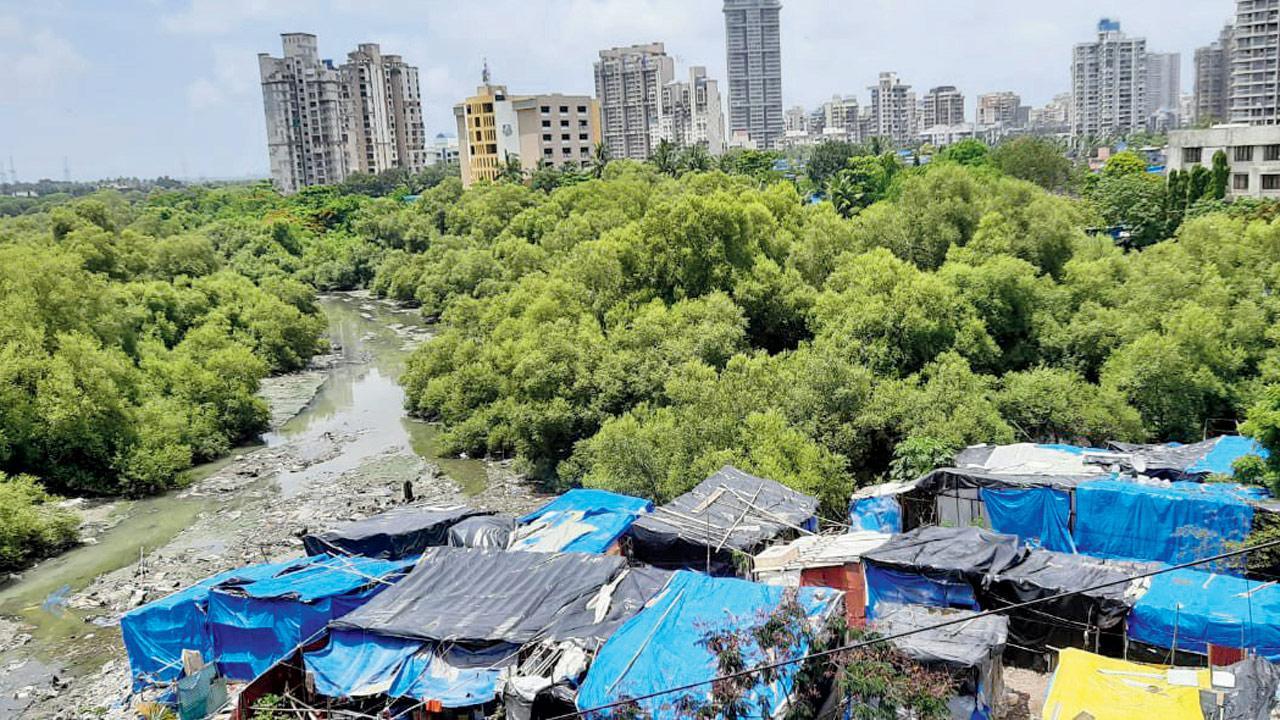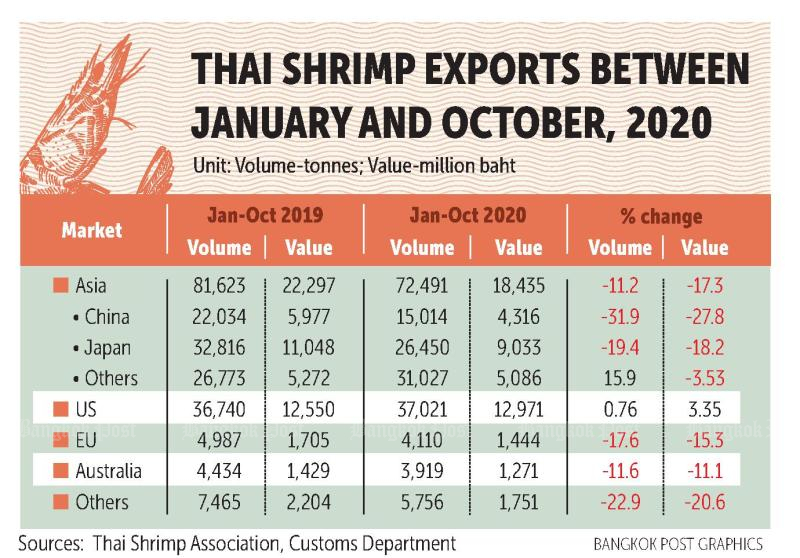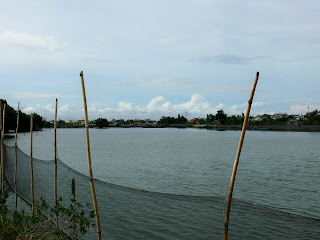Rangers take on Community-based projects

CAYMAN ISLANDS – The Mangrove Rangers moved into full action this fall with a variety of programs this fall. In addition to a video series for teachers entitled ‘Creature Features’ focusing on the inhabitants and dependents of Grand Cayman’s threatened Central Mangrove ecosystem, the Rangers implemented several projects. Central to these was the problem of illegal cement dumping which has been a perennial problem in Grand Cayman. Caught in the act, National Concrete cleaned up the dump and is being prosecuted under the Litter Law. Following this violation, the Rangers have begun a survey of similar mangrove concrete dumps around the island and will post details of these online. In December Ranger Dinara took part in the first ever regional Ocean Heroes bootcamp, where she lead Ocean Heroes as a Squad Leader. She gave a presentation about the role of mangroves in the Coastal Lagoon Ecosystem and how you can help to protect mangroves from development through data and public awareness. READ MORE GLOBAL Working With Nature Is The Best Way To Tackle The Impacts Of Climate Change

GLOBAL – Nature-based solutions to tackling climate change will be a big talking point in 2021, as countries, companies and investors step up their efforts to cut carbon. But few people know what they are. Essentially, they are alternatives to traditional ‘gray’ infrastructure such as dams, seawalls and reservoirs that involve a lot of concrete and are often only temporary fixes for problems such as flooding, water scarcity and quality, or soil erosion. More formally, the International Union for Conservation of Nature (IUCN) says nature-based solutions are “actions to protect, sustainably manage, and restore natural or modified ecosystems, that address societal challenges effectively and adaptively, simultaneously providing human well-being and biodiversity benefits”. Nature-based solutions include conserving coral reefs and restoring mangrove belts to help limit coastal flooding and sea level rise. They also provide breeding grounds for marine biodiversity and 80% of global fish populations depend on healthy mangrove ecosystems. But they are often under-appreciated, a new report explains. READ MORE AMERICAS ‘Protectors Of The Coast’: What Mangroves’ Northward March Means For Northeast Florida

USA – Walking along a wooden path winding through Nease Beachfront Park in St. Augustine, Danny Lippi pointed to coastal trees sprouting from the shrubbery around him. The exotic species were brought here by warming temperatures — bringing business opportunities for the local arborist. “All of these are mangroves,” Lippi said, surrounded by the young perennial plants, blooming with hues of green and golden yellows. “You can actually see that line where the upland vegetation just stops.” Demand for Lippi’s mangrove trimming service has been growing as the trees have been accumulating northward, starting to block coastal views from Ormond Beach to Palm Coast. Their northernmost limit in the U.S. sits about 70 miles from St. Augustine on Amelia Island, and it continues to shift. Ranges of mangroves have naturally waxed and waned over the years, influenced by the weather, but with climate change has come a crucial reduction in crop- and tree-killing freeze events. The last freeze strong enough to wipe out mangroves took place in 1989. This decline in the number of frosts, coupled with intensifying storms spreading seed-like propagules, is causing the trees to push poleward. Smithsonian Environmental Research Center research shows mangrove coverage has doubled along Northeast Florida’s coast since 1984. READ MORE Oil Spills in Venezuela Offer Bleak Vision Of What Lies Ahead

VENEZUELA – Tropical rains have washed away most outward traces of the oil spill that ravaged Rio Seco this fall. But the fishing village in the shadow of Venezuela’s main refining hub bears the scars of deeper contamination. Boats with oil-stained hulls must now travel further out into the Caribbean to make a catch. Crude has soaked the roots of nearby mangroves, leaving shrimp grounds barren. Seeing no future, dozens of fishermen and their families have fled their homes; those who are left loiter in the village, waiting for Petroleos de Venezuela, the state oil company known as PDVSA, to compensate for lost boats, equipment and sales. Broke and subject to international sanctions, President Nicolas Maduro’s government is squeezing what it can from Venezuela’s collapsing oil industry, unleashing an environmental disaster in one of Earth’s most ecologically diverse nations. As the country’s vast resources become a toxic burden, Venezuela offers a bleak vision of the end of oil in a founding OPEC member. READ MORE ASIA New tree-spider crab species with purple patches described from Kerala’s mangroves

INDIA – In a serendipitous discovery, researchers have described a tiny, cryptic species of tree-spider crab found climbing the mangrove trees of Kasargod district in the southern state of Kerala. Covered in dark purple patches, the shell of the crab is smaller than an adult thumbnail. The crustacean features long walking legs, large eyes and a unique structure of its male genital appendages. Belonging to the newly-formed genus called Leptarma, the crab is named Leptarma biju after the head of the Department of Aquatic Biology and Fisheries at the University of Kerala, A. Biju Kumar, who has carried out extensive work on aquatic organisms including crustaceans in Kerala over the past three decades. He has to his credit 34 new species, which include fishes, crabs and helminths (worms). The crab is the first species of this genus to be reported from India. READ MORE How Did Widespread Mangrove-Chopping Go Unseen?

INDIA – The Versova police have registered two FIRs against seven people allegedly involved in the chopping of mangroves and constructing around 130 huts and temples and dumping debris at Sardar Vallabh Bhai Patel Nagar at Four Bungalows, Andheri West. All of them are locals. An activist also informed the Forest Department about the mangrove-chopping and after an investigation, the tehsildar registered the case. Fighting to save mangroves is a staple and enervating task for green warriors who need to be in a state of constant, high alert when it comes to this activity. Their work, unfortunately, does not stop at that. Then, there is the entire onerous responsibility of seeing action taken, at times this too is a long and sapping endeavour after which, activists have to ensure that there is no further destruction. It was reassuring to see in this newspaper’s report that the police said the accused are going to be arrested soon. READ MORE Editors note – although the shrimp industry showed declines, Americans increased their consumption by nearly 3.5 million baht as compared to 2019. Watch QUESTION YOUR SHRIMP
Shrimp exports expected to decline 14%

THAILAND – Thai shrimp exports are expected to fall 14% this year to only 150,000 tonnes, with values down 21% to about 44 billion baht, attributed mostly to the pandemic and the strong baht. Somsak Paneetatyasai, president of the Thai Shrimp Association, said a second wave of outbreaks in many countries has weakened demand for shrimp during the Christmas and New Year period. The association forecast in December last year Thai shrimp exports would recover to a 20% increase this year, in line with increased production. According to Mr Somsak, Thailand expects lower production this year of only 270,000 tonnes, down 7% from 290,000 tonnes in 2019, attributed to shrimp diseases and weak demand during the pandemic. The world’s overall shrimp production is also expected to drop by 3% to 3.32 million tonnes. READ MORE Illegal prawn farms face demolition in Kendrapara

INDIA – In a major drive against illegal aquaculture, prawn farms spread over a massive 130 acre of forest land in two seaside villages of Mahakalapada block have been demolished by Forest Department for violation of coastal regulation zone norms as well as court directives. The unlawful prawn farms were located in Badatubi and Sanatubi villages under Batighar gram panchayat where Forest sleuths carried out the operation over the last four days. “All the shrimp farms in the two villages were illegal as they violated Coastal Regulation Zone norms and rulings of the Supreme Court and Orissa High Court,” forest range officer of Mahakalapada, Sahaji Charana Biswal said. The demolition was carried out under police protection. The Forest department plans to go for plantation on the dismantled prawn farms to convert the area into a mangrove forest. Prawn farm owners release effluent from gherries into nearby rivers and ponds polluting surface as well as groundwater sources used by the villages. These farms also pose a direct threat to mangrove forests. READ MORE Dongzhaigang wetland ecological rehabilitation project accomplished

CHINA – A kingfisher perches on a mangrove tree at Sanjiang mangrove wetland park in Haikou, south China’s Hainan Province, on Dec. 23, 2020. The Dongzhaigang wetland ecological rehabilitation project was accomplished recently, according to the Dongzhaigang National Nature Reserve Authority in Haikou. Kicked off on March 18, 2019, the project aimed to effectively rehabilitate the ecological systems including mangrove forests along the seashore of Dongzhaigang so that migrant birds in the country may find better habitats in winter time. VIEW PHOTOS Indonesia creates expert wetlands team to revitalize development goal efforts

INDONESIA – A Strategic Coordination Team for Wetlands Management created by Indonesia’s Ministry of National Planning or National Development Planning Agency (Bappenas) in October aims to streamline the country’s efforts to meet its international Sustainable Development Goals (SDGs) and prioritize low-carbon development. Among a broad range of duties, the team will be responsible for planning, synchronizing policies, data and information as well as the implementation of monitoring, evaluation and reporting, the government stated in a decree. Indonesia, the country with the third largest area of peatlands after Canada and Russia, is also home to the most tropical peatlands in the world, which store around 60 billion tons of carbon. In addition, the archipelago features a vast number of mangroves, which store more than 3 billion tons of carbon — the most found on any continent. READ MORE Couple highlight use of natural mangrove dye

MALAYSIA – A couple of graphic designers are using their handmade crafts, made with natural mangrove dye, to shed light on the beauty of the coastal trees. Jo Wong Seok Wei, 47, and her husband Lim Beng Chee, 53, started exploring the use of natural dye from mangrove barks about two years ago and have since produced their own line of natural fashion and lifestyle products. “As Malaysians, we have always wanted to incorporate something that is close to our home into our crafts. With Tanjung Piai and Pulau Kukup here getting recognised as Ramsar sites or Wetlands of International Importance, it was a natural choice for us to turn to mangrove trees as the source of our dye. While researching mangrove trees, we learnt that the trees, with their clustered roots, are natural barriers to break strong waves before they hit the shore. They are also shrinking due to the threats of development and the large amounts of plastics and rubbish getting trapped in their roots. So our aim is to highlight this problem and also provide an alternative product for people to use, rather than using single-use plastics and following fast fashion, which leads to wastage, ” said Beng Chee in an interview. READ MORE Fishpond inventory for mangroves needed

PHILIPPINES – Experts called on the Bureau of Fisheries and Aquatic Resources (BFAR) to conduct a full inventory of fishponds in Manila Bay that can be used for the reversion and rehabilitation of mangroves, whose number has been declining for decades. During the “Reverting Abandoned, Underdeveloped, Unutilized Fishponds into Mangroves” webinar, Wilfredo Yap, executive director of the Santeh Aquaculture Science and Technology Foundation, said “priority should be given to update mangrove and fishpond area statistics and harmonize terminologies,” as data currently used by the government was “not in harmony.” “[The] BFAR should make [a] full inventory of fishponds and determine how many have been titled and how many are patently illegal,” he added. According to Rene Rollon, director of University of the Philippines Institute of Environmental Science and Meteorology, many mangroves around Manila Bay have been lost over the years. READ MORE EUROPE Mangroves in the battle against land degradation and water scarcity

E.U. – An EU-funded project team received a research grant from an international organisation to apply their bio-inspired desalination solution to farmland in Oman. Birds in flight, termite mounds and burrs – these are just some of the natural phenomena that scientists have looked to for technological inspiration. By imitating nature, they have been able to solve many challenges, providing society with practical applications ranging from aeroplanes and green buildings to Velcro. In a more recent example of biomimicry, researchers supported by the EU-funded HYDROUSA project have used mangroves as their source of inspiration to tackle the problem of land degradation and water scarcity in coastal areas in the Mediterranean. Called Mangrove Still, the mangrove-inspired technology platform was developed by HYDROUSA project partner Planet. According to environmental engineer and Planet co-founder Alessandro Bianciardi, mangrove trees grow in saline water and are the first to colonise an empty coast because they’re able to desalinate water. As they grow, the mangroves create conditions conducive for other species to thrive, and, together with these species, they gradually build an entire ecosystem where none had existed. READ MORE OCEANA Only known habitat of Broome mangrove snake approved for clearing

AUSTRALIA – The approval of the clearance of little more than a hectare of mangroves in Western Australia has put one of the country’s rarest snakes at risk of losing its only known habitat. Critics say the Department of Water and Environmental Regulation’s (DWER) decision has put the harmless Broome mangrove snake in danger. Little is known about the snake which looks almost identical to other species common in Australia’s north. It reaches a maximum length of 40 centimetres and has only been seen by a handful of people. It has only ever been found in the area of mangroves around Broome’s old pearling jetty, which is now part of the redevelopment of the town’s CBD. READ MORE FEATURED AUDIO Conservation Heroes
Welcome to Conservation Heroes, the heroes of this show are the dolphins, bats, otters, mangroves, newts and many others who are protecting our environment right now. This show will look at different laws, guidelines, or policies and will also offer you some top tips to help you protect our planet and even become a conservation hero yourself. Each episode will contain interviews from scientists, academics, lawyers, environmental activists and more. On todays’ show we have Alfredo Quarto, the founder of the Mangrove Action Project to talk to us about his work with wetlands, his love of wildlife and what we can do to support the climate and the environment. LISTEN TO PODCAST Like this newsletter?
Pease consider donating to MAP to keep it going.
Giving could never be easier  | BUY YOURS!

ACTION ALERTS Tell the Japan International Cooperation Agency not to fund polluting coal – TAKE ACTION Stop the destruction of Can Gio Mangrove Biosphere Reserve
SIGN PETITION (Scroll down in linked page for English version) Please SIGN: keep plantations out of orangutan habitat!
TAKE ACTIONUnilever: stop destroying mangroves for convenience food! SIGN OUR PETITION
Stop plundering the oceans for industrial aquaculture! SIGN THE PETITION
Like this newsletter? Pease consider donating to MAP to keep it going. Giving could never be easier
Please see our newest video: “Restoring The Natural Mangrove Forest”
WATCH VIDEO 
Restoring The Natural Mangrove Forest
Watch movie 
Community Based Ecological Mangrove Restoration in Rufiji Delta VIEW VIDEO Video: Mangroves for the Future – A look bacK. As the latest phase of Mangroves for the Future (MFF) draws to a close, this video highlights some of the project’s most successful initiatives – from local women supporting national park management in Viet Nam to an island in the Maldives that has become a model for waste management, and everything in between. View Here WANT TO GET INVOLVED?
Follow and Join MAP!    
Like this newsletter? Pease consider donating to MAP to keep it going. Giving could never be easier 

Singing for the Sundarbans WATCH HERE Entrevista con Monica Quarto del Mangrove Action Project (Spanish language) Oye Aqui
VOLUNTEER OPPORTUNITY 
MANGROVE ISSUES Want to learn more about mangroves?
Our short presentation will give you a better understanding of the issues we are working to solve. WATCH PRESENTATION What is CBEMR? Download MAP’s 2 page CBEMR Information Sheet containing links to all MAP’s CBEMR resources – CLICK HERE
View MAP’s uploaded Videos at
MAP Video Gallery Question Your Shrimp Consumer/Markets Campaign!
WATCH VIDEO Mangroves: Guidebook to Malaysia – Click Here SHARE MAP’S VISION
CLICK HERE to watch short introductory video. Together we can work “at the roots of the sea”. Our short documentary, Reducing the Risk of Disaster through Nature-Based Solutions : Mangroves

Marvellous Mangroves Curriculum The Marvellous Mangroves Curriculum begins with a simple philosophy – getting future generations to not only learn about, but understand the importance of mangrove forests. VISIT 
The award-winning Marvellous Mangroves (MM) curriculum educates children on the importance of mangroves and their ecological functions, teaching them about modern challenges and mechanisms for sustainability. VIEW VIDEO Marvellous Mangroves Curriculum in Bangladesh – WATCH VIDEO
MARVELLOUS MANGROVES IN BRAZIL
En Portuges 
Marvellous Mangroves – A Curriculum-Based Teachers Guide.
Like this newsletter? Pease consider donating to MAP to keep it going. Giving could never be easier 
“Question Your Shrimp” Campaign Question Your Shrimp – is it really sustainable? Sign the Petition
Note to Our Readers: We strive to keep active links in our newsletter. However, due to circumstances beyond our control, occasionally links to stories may become broken. If you find a link to a story is not functioning, please cut and paste the headline into your browser search bar. In most cases you should be able to locate the original story.
Not yet a MAP News subscriber?
Click here to subscribe. 
|





























